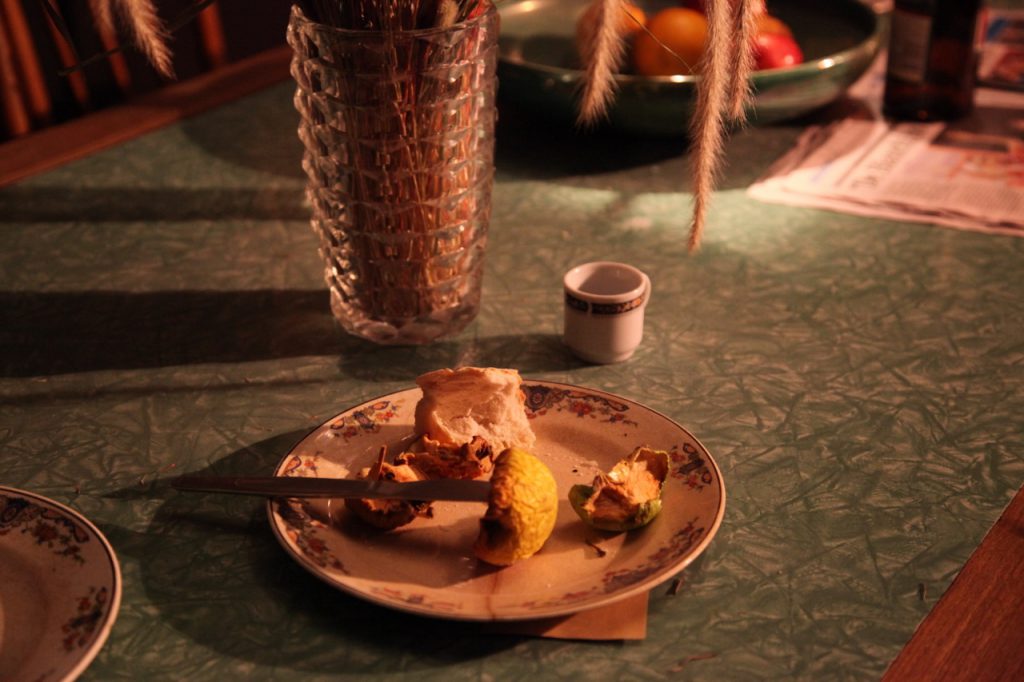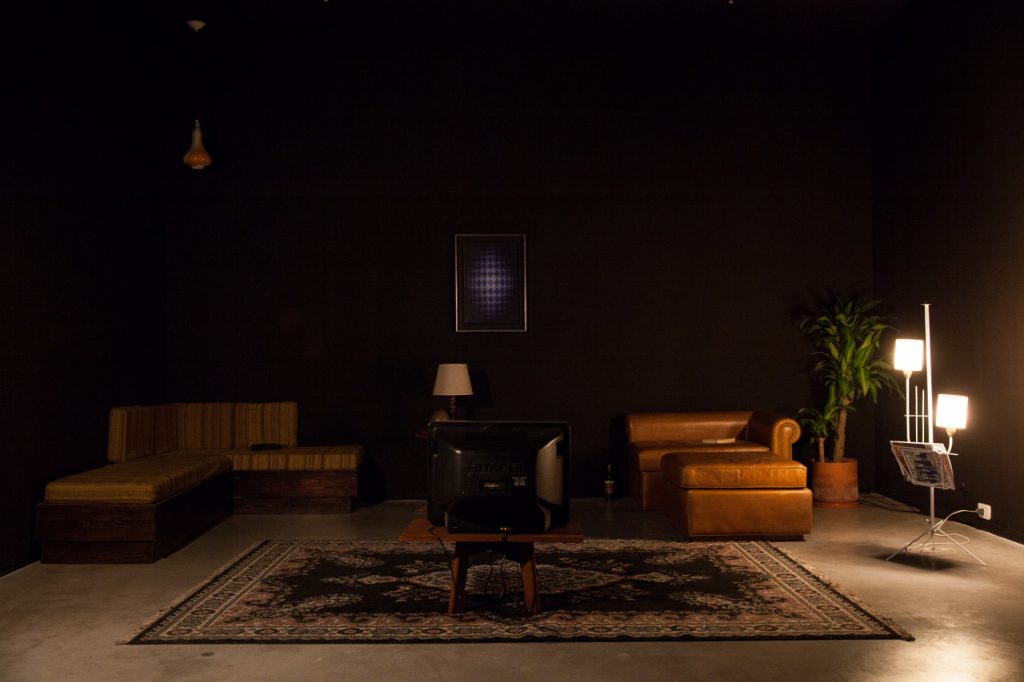In Habitat Sequences, the artist makes use of basic cinematic principles such as framing and lighting to generate spatial tension without any discernible action or scenes apart from those constructed by the combination of different atmospheres. By maintaining a constant pattern of lights with brusque, immediate changes, Lester creates spatial ellipses: visual jumps between the light and dark zones that allow the spectator to navigate through different experiences of the same scenario. The segmented structure creates a décollage of a whole that can only be reconstructed by the audience as a mental image, in which their memory, perception and imaginary projections in time and space combine.
Lester’s process begins with an analysis of narrative construction, which results from his research into extremely diverse disciplines, especially film. Lester’s narrated space is created by its subjection to cyclical time as marked by the lighting loop. The artist subverts the concept of the traditional narrative by not providing clear indicators of the start, middle or ending.
These black holes have great narrative potential thanks to the infinite array of possibilities made available by absence (or the things that lurk beyond the visible spectrum). By relating the presences and absences a further fictional dimension emerges that enables the spectator to enlarge their field of perception and knowledge.
This exhibition also featured pieces from the Museo de Arte Moderno’s collection of industrial design.
Gabriel Lester (b. 1972, Amsterdam; lives and works in Benelux) studied at the Academy of Art and Design in Breda between 1994 and 1995 and later continued his training at Hogeschool Sint Lukas, Brussels (1995-1996) and the prestigious Royal Academy of the Arts en Amsterdam (1999-2000). His work has been included in major collective exhibitions and important international events such as the Sydney Biennial (2014), the Venice Biennale (2013), Documenta, Kassel (2012) and the International Art Biennial, Sao Paulo, (2010) among many others.




